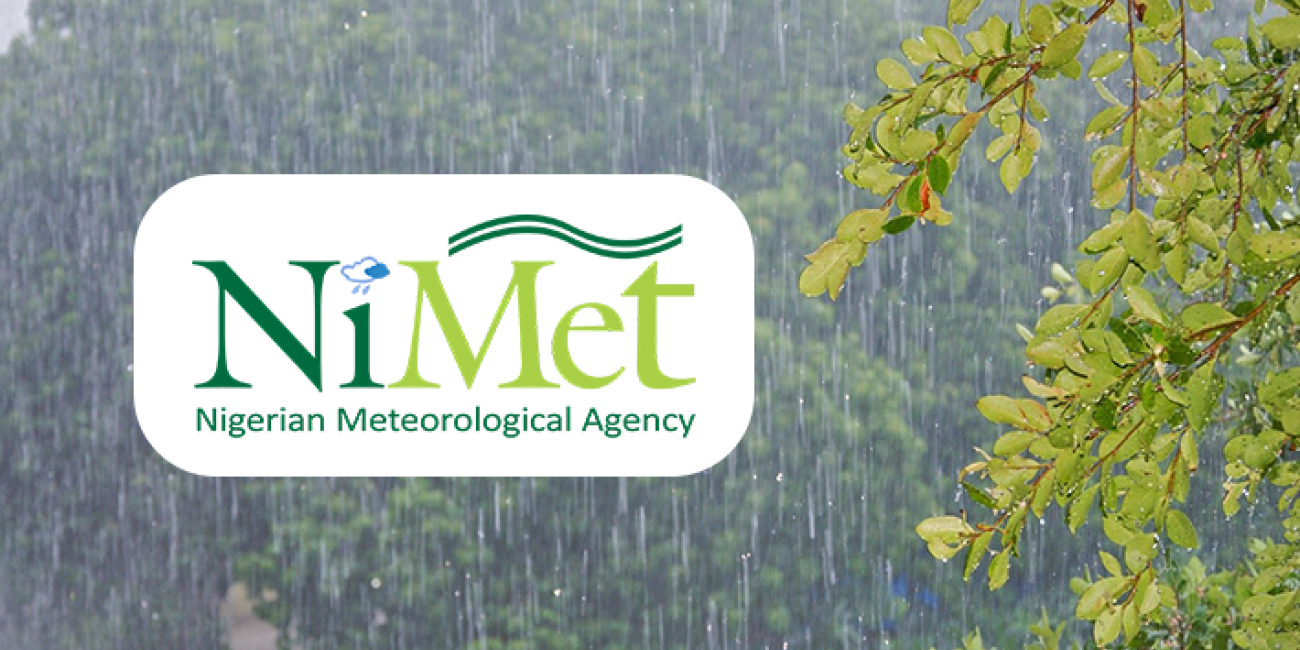The Nigerian Meteorological Agency (NiMet) has issued its detailed weather outlook for June 2025, signaling the peak of the rainy season across various regions of Nigeria.
The agency highlights that the Inter-Tropical Discontinuity (ITD), a critical meteorological phenomenon responsible for driving rainfall patterns, is projected to advance to between 14°N and 16°N by the end of June.
This northward shift is expected to usher in heightened rainfall, particularly in Nigeria’s far northern regions, marking a significant transition in the country’s weather dynamics.
In the southern and central states, frequent rains accompanied by thunderstorms are anticipated, creating a robust wet season.
Meanwhile, northern Nigeria will experience a more gradual increase in rainfall as the ITD progresses.
However, NiMet has raised concerns about certain areas facing below-average rainfall, which could lead to dry spells and impact agricultural and water management activities. Specifically, states such as Kwara, Kogi, Niger, Nasarawa, Benue, Taraba, Adamawa, Kaduna, Kano, Katsina, Sokoto, Edo, Delta, and the Federal Capital Territory (FCT) face a 40–50% probability of experiencing below-normal rainfall. Additionally, southwestern states, including Ekiti, Osun, Oyo, Ogun, Ondo, and Lagos, are projected to have a 50–60% chance of significantly reduced rainfall, potentially exacerbating water scarcity in these regions.
NiMet has also issued a stark warning about the risk of flash flooding in several northern states, including Nasarawa, Plateau, Bauchi, Jigawa, Kaduna, Kano, Kebbi, and the FCT. These areas are likely to experience intense, short-duration rainfall events that could overwhelm drainage systems and trigger destructive flash floods.
The agency has called on residents, local authorities, and emergency response teams to remain vigilant and implement proactive measures to safeguard lives, property, and infrastructure from potential flood-related damages.
On the temperature front, NiMet predicts generally mild conditions across much of the country, providing a reprieve from extreme heat.
However, northern states such as Sokoto, Kebbi, Katsina, Kano, Jigawa, Yobe, Borno, and Zamfara may occasionally experience hot spells, which could pose challenges for residents and agricultural activities. The cooler weather in most regions is expected to create favorable conditions for the storage of pharmaceutical products, reducing risks to temperature-sensitive medical supplies.
Additionally, the agency notes a low risk of malaria transmission in central and southern Nigeria due to the prevailing weather patterns.
To mitigate the impacts of variable rainfall, NiMet has urged farmers to adopt climate-smart agricultural practices and stay informed with daily and weekly weather updates to better navigate potential dry spells. Dam operators and water resource managers have also been advised to closely monitor water levels and prepare for fluctuations driven by the rainy season’s intensity. NiMet emphasized its commitment to delivering accurate and timely weather forecasts to support public safety, agricultural planning, and infrastructure management.
The urgency of these warnings is underscored by the recent catastrophic flooding in Mokwa, Niger State, which occurred in late May 2025. Following hours of torrential rainfall beginning on the night of May 28, floodwaters inundated entire neighborhoods, including the Tiffin Maza and Anguwan Hausawa communities.
The rapidly rising waters, reaching waist-deep levels within approximately five hours, submerged homes, swept away buildings, and destroyed vehicles.
As of June 1, 2025, the disaster has claimed over 200 lives, with more than 500 individuals still unaccounted for. At least 121 people have been hospitalized due to injuries sustained during the flooding, and over 3,000 residents have been displaced, with more than 500 households affected across the impacted communities.
This tragic event serves as a sobering reminder of the destructive potential of extreme weather and the importance of heeding NiMet’s forecasts and preparedness recommendations.


